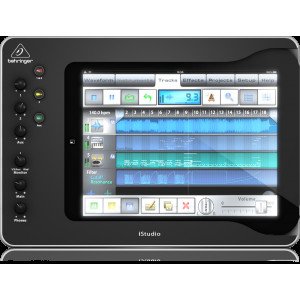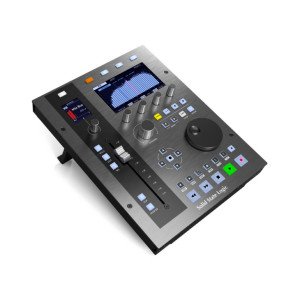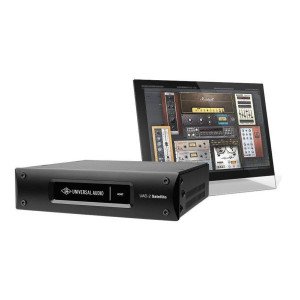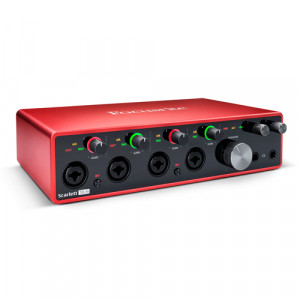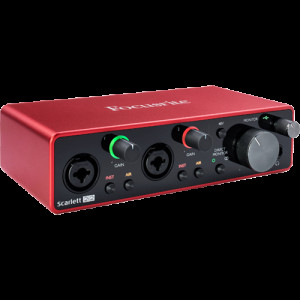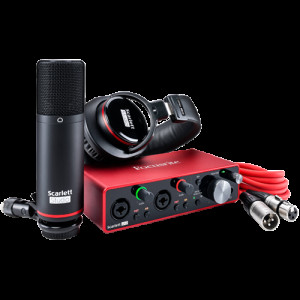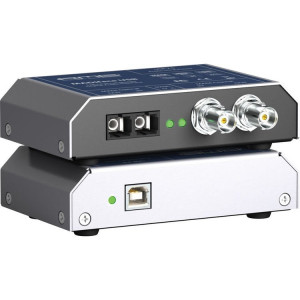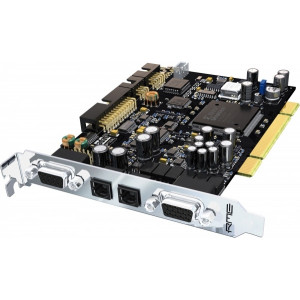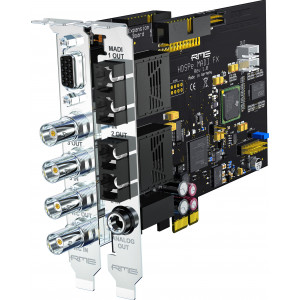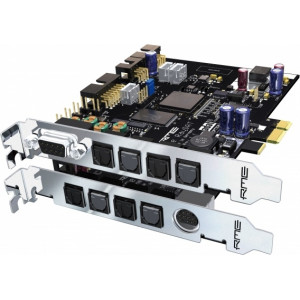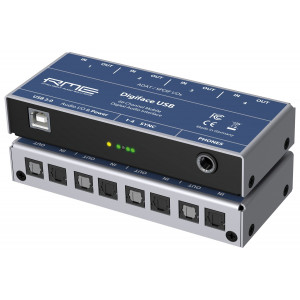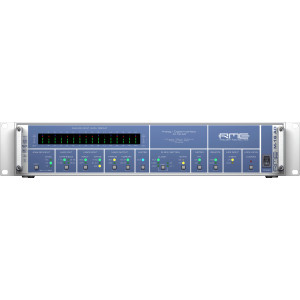Предусилвател за микрофони RME Micstasy
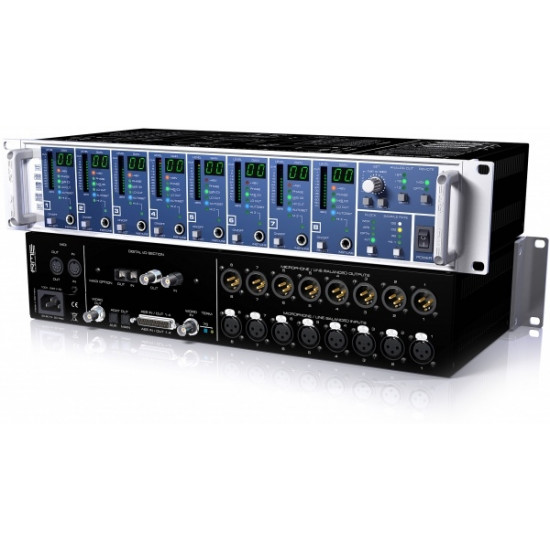
- Наличност: Извън наличност
- Кат. номер: 7041
|
|

|

Купи на изплащане със стоков кредит от Банка ДСК
• Улеснена процедура за електронно подписване
• Атрактивни условия по кредита
• Параметри изцяло по Ваш избор
• Одобрение до няколко минути изцяло онлайн
Micstasy is an 8-Channel hi-end mic/line preamp and AD-converter combining typical RME features with a number of previously unseen features. It can be used analog (Mic/Line In to Line Out) and digital (Mic/Line In to Digital Out), with both signal paths operating simultaneously. Special highlight: the device is fully remote-controllable via MIDI (also MIDI over MADI).
The Micstasy's innovative concept allows for amplification and digitization of ALL analog signal sources. Be it high-level stage signals, typical studio signals, lower level and high-impedance instruments, or dynamic, condenser or ribbon microphones: Micstasy understands them all - in a way that is simply thrilling.
The signals amplified by the Micstasy are available at the analog outputs for passing them on, making an expensive splitter box on stage obsolete. All functions can be remote controlled via MIDI and MIDI over MADI, allowing the device to be placed near the microphones, ensuring highest sound quality. Adding the optional MADI Card results in even more options. The I64 MADI Card provides serial pass-through capability from one Micstasy to the next (up to 8). All up to 64 audio signals are then available at the last device on one single line. Such a way of cascading is also possible between Micstasy and ADI-8 QS.
Overview of the Micstasy's most important features:
- 8 balanced XLR mic/line inputs with 85 dB gain range
- Analog input level from -56.5 dBu up to +30 dBu
- High-end circuitry with 4 relays per channel, super low-noise microphone front-end
- Near click-free gain changes in steps of 0.5 dB
- Large frequency range (200 kHz) with special EMI input filtering
- 8 balanced TRS line / instrument inputs with Hi-Z option
- 8 balanced XLR line outputs, maximum level +27 dBu
- 4 x AES/EBU Out via D-sub, 8 channels @ 192 kHz
- 2 x ADAT Out, 8 channels @ 96 kHz (SMUX and SMUX4)
- Optional MADI I/O (I64 MADI Card) with serial cascading and digital return path
- Symmetrical hi-pass (Lo Cut) with super-low THD, 18 dB/oct
- LED level meter with 13 LEDs per channel
- M/S de-/encoding for the digital output
- AutoSet: Automatic gain reduction with multiple linking
- Current state can be stored to 8 user presets
- Fully remote controllable
Features

In a standard 19" box with 2 unit height the device offers numerous extraordinary features like Intelligent Clock Control (ICC) Intelligent Clock Control (ICC)
Our unique SyncCheck and AutoSync technology has evolved into the new Intelligent Clock Control of the Hammerfall DSP system. HDSP is the only digital I/O-system worldwide capable of measuring and displaying the frequency of all clock sources. Even word clock! Based on validity and current sample rate the system then decides which clock source should be used - fully automated and performed in hardware! With this the HDSP system offers the most easiest handling of the present clocks, although having a lot digital inputs, plus the most advanced support when configuring the clock setup. , SyncCheck SyncCheck
When working with several digital sources it is not only necessary that these are all properly locked, they also have to be totally synchronized. Else drop outs and crackling occurs.
RME's exclusive SyncCheck checks all input signals. In clock mode Master the synchronous operation to the internal clock is checked. This outstanding and unique technology helps to find errors immediately. The actual state of each input is displayed in the settings dialog. ®, SteadyClock, TotalGain, AutoSet, MIDI over MADI, and remote control via MADI and MIDI.
The technologies known from other RME products like SyncCheck® ensure perfect synchronization and clear detection of errors. Also multiple units can be stacked and operated sample-aligned, using word clock. All settings are stored when the unit is switched off.
The Micstasy can be fully remote controlled and configured via MIDI, and all status displays can be queried through MIDI. Each Micstasy can be given a separate ID, allowing separate remote controllability of various devices with only one MIDI channel. The MIDI remote is also compatible to Digidesign's Pro Tools system, Yamaha's M7C and PM5D. The manual further shows how to remote control the Micstasy from the DM-1000 and DM-2000.
RME's SteadyClock(TM) guarantees excellent clock quality in any situation. Due to the highly efficient jitter reduction, the Micstasy's AD-converters operate independently from the quality of the external clock signal, as if they are working with internal clock all the time - guaranteeing a prestine sound quality! Additionally Intelligent Clock Control (ICC) will retain the last valid sample frequency in case of a loss of the input signal.
Low Latency
In the Micstasy RME uses high-class AD-converters from Cirrus Logic, offering exceptional Signal to Noise and distortion figures. But the biggest difference to all other ADCs out there is its innovative digital filter, achieving for the first time a delay of only 12 samples in Single Speed 0.25 ms), 9 samples in Double Speed 0.09 ms), and 5 (!) samples in Quad Speed (0.026 ms).
These values are less than a quarter of those available from even much more expensive devices. They represent an important step in further reducing the latency in the computer-based recording studio. At DS and QS the added latency can simply be ignored. And with the ADI-8 QS, a matching DA-converter with only 5 up to 10 samples delay will turn 'analog digital monitoring' into real analog-style monitoring.
AutoSet
Some preamps include limiters in order to prevent clipping, especially of the A/D converter stage. Such a circuitry is not feasible for the Micstasy, because it would spoil the mic preamp's excellent technical specifications.
But as the Micstasy's gain is controlled completely digitally, the device can set it automatically, thus providing perfect protection from overload with no degradation of the audio signal, which does not have to pass any additional electronic circuitry.
In the Setup menu, the threshold level beyond which the gain will be reduced can be adjusted in four steps (-1, -3, -6, -12 dBFS). Any change of gain will be shown immediately on the GAIN displays. And with AutoSet activated, the gain can still be changed manually.
Optional: I64 MADI Card
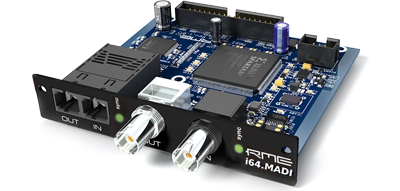
The I64 MADI Card provides the Micstasy with a 64-Channel MADI input and output. Coaxial and optical output operate in parallel to the AES/EBU and ADAT output, therefore deliver the same data.
The I64 MADI Card features an optical as well as a coaxial MADI input. The input is switched automatically, according to where a valid input signal is detected. Full redundancy is ensured by the automatic input switching, immediately changing to the other input in case of loss of the input signal.
The MADI input will operate as an optional clock source (Clock section, OPTN) as well as a thru-input. Since each Micstasy uses only 8 channels, up to 56 channels can be passed through. This technique is used to serially cascade several Micstasys. Incoming MADI data is passed through unchanged, only one block of eight channels is replaced. This allows up to 8 devices to be connected serially. All 64 combined channels are available at the last device's MADI output.
With an installed I64 MADI Card the Micstasy can be remote controlled via MADI. At the same time MIDI data are transmitted via MADI.
When multiple devices are connected serially, the MADI I/O of each Micstasy causes a delay of 3 samples. Therefore at the MADI output of the last device, the data of all upstreamed devices are delayed. The problem of this offset is solved by the function Delay Compensation.
Using the I64 MADI Card provides the ability of 8 channels being used as digital return path, sending audio via MADI to the Micstasy's ADAT and AES outputs. For example stage and studio monitors can be fed digitally from the Micstasy. On stage the use of an additional D/A-converter (e.g. ADI-8 DS might be necessary. The MADI output continues to carry the analog input signals and the fed-through input data.

